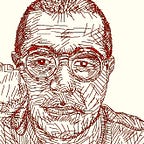From Definitions to Design: Reclaiming Conceptual Depth through Reflective Practice in Design
As is often said, problems of definition do not preclude existence. That is, the difficulty in defining something does not negate its existence. The design needs definitions to evolve into material reality.
From my experiences as an architect, teacher, and author, I’ve learned that grappling with conceptual issues is crucial at the onset of any inquiry that aims to lead to sound decisions. Before designers consider how a project could come to life, they must first understand what they are dealing with. Yet, as humanity progresses, it appears that more people, including my colleagues, students, and fellow practitioners, are increasingly aligned with misguided interpretations of concepts. And that’s assuming they ever care about concepts at all.
In my long experience, I have seen the loss of an in-depth understanding of cause and effect as particularly alarming. Any inquiry that is supposed to lead to good decisions in a design process begins with conceptual issues. A designer must understand what he is dealing with before he even considers how a project might come to life. Many in the field of architecture and design seem to navigate by vague notions of the decision-making process. The lack of logical reasoning and a spiritual or philosophical engagement with our work raises the question of where reality is supposed to be in our practice.
This apparent disconnection might stem from broader shifts in educational and professional landscapes. In numerous educational institutions, there’s a growing emphasis on technical proficiency over critical thinking and theoretical understanding. While technical skills are important, this trend might be cultivating a generation of professionals adept in tool usage and methodology but less proficient in questioning assumptions or engaging deeply with conceptual issues. Such educational practices mirror errors that permeate professional settings, where rapid learning cycles and the quick shift from one subject to another leave little room for profound engagement with complex concepts, leading to superficial understanding. One could infer that there exist errors in educational institutions that are comparable, if not identical, to those observed in professional settings. It’s possible to say that erroneous teachers impart incorrect information and produce erroneous graduates. In professional practice, architects and designers must often pivot according to market demands, client preferences, and prevailing trends, sometimes at the expense of innovation and thorough conceptual development. This environment discourages risk-taking and diminishes the depth of engagement with the nature of design and its impacts.
What can be done to address these issues? Reintegrating humanities and philosophy into education could foster a more interdisciplinary approach, helping students and professionals engage more deeply with the conceptual underpinnings of their work. Creating forums for discussion and debate can revive a culture of intellectual rigor. Professionals should be encouraged to reflect not just on what they produce but why they produce it, considering the broader implications of their work within a societal and ethical framework.
In a world that typically prioritizes speed and efficiency, how can we better value slow and careful thinking, especially when addressing complex or abstract problems? Acknowledging these challenges, as I am in this discourse, is a vital first step towards fostering a more thoughtful, critically engaged practice in architecture and beyond.
Addressing these issues is not straightforward and involves confronting deeply ingrained educational, professional, and societal trends. Understanding the problem is the first step towards thinking more carefully and critically about architecture and urban design.
Disclosure: This article contains affiliate links to my books. If you purchase a book or read it through Kindle Unlimited, I’ll earn a commission or receive compensation at no extra cost to you. Thank you for your support! Please note that due to my location, Medium does not allow me to receive any direct earnings from the readership of my articles. Your support through purchasing or reading my books is greatly appreciated and helps sustain my writing.
- Design Meaning: Meaning Design by R. B. Assunção (tiogegeca)
Kindle Edition https://amzn.to/4bhMsrL Dive into the intricate relationship between design and meaning in this thought-provoking exploration. Perfect for anyone fascinated by how design shapes our experiences and interactions, this book challenges, inspires, and enlightens readers across disciplines. - Planning Philosophy: Philosophy Planning by R. B. Assunção (tiogegeca) Kindle Edition https://amzn.to/3WEX3sT Explore the interplay between philosophy and urban planning. This edition has been significantly revised and expanded, offering focused reflections on how planning philosophy and philosophy of planning shape our physical and social environments.
- Lições Solitárias: Arquitetura e Evolução das Ideias by R. B. Assunção (tiogegeca) Available in eBook and Print-on-Demand (Brazilian edition) https://amzn.to/3w5logB Dive into a reflective journey, where architecture meets the evolution of ideas. This book offers fresh perspectives on the materialization of projects, discussing project representations and processes enriched with the author’s drawings. Ideal for architects, designers, engineers, and anyone interested in urban planning and humanity’s progress.
- A PERSONALIDADE ARQUITETÔNICA DE OURO PRETO by R. B. Assunção (tiogegeca) Kindle Edition — Available only as eBook (Brazilian edition) https://amzn.to/3V2yCUM Embark on a unique journey through Ouro Preto with a guide that intertwines architectural insights with the rich historical tapestry of this iconic city in Minas Gerais, Brazil. This eBook expands into a dialectic exploration of Ouro Preto’s evolving identity, from its 17th-century origins to its present-day allure. This guide is not just about architectural styles but is a profound reflection on how architecture and urban planning encapsulate the soul of a place.
